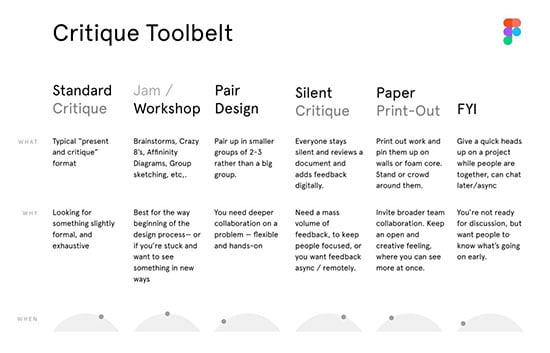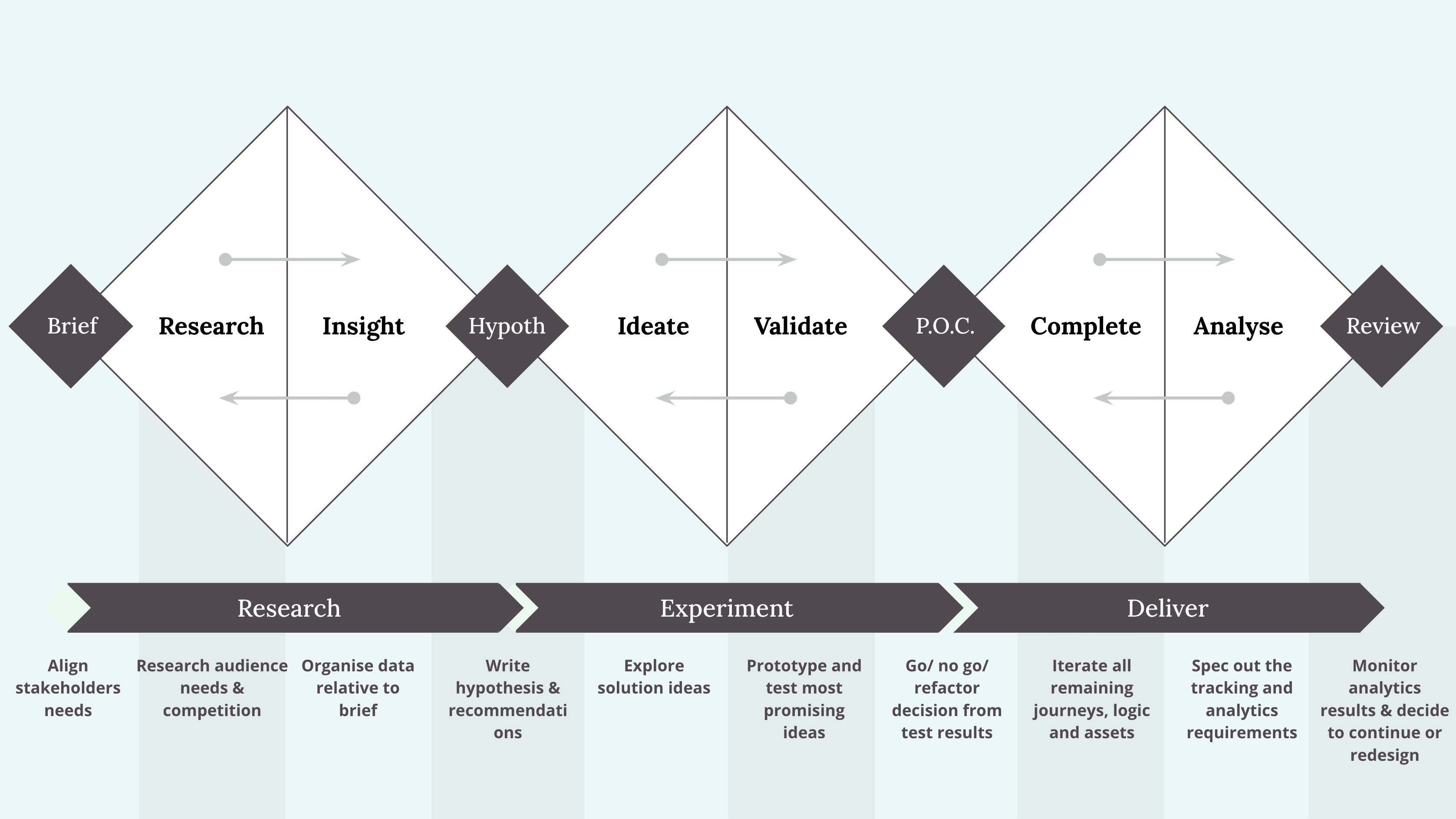Designing Better Design Critiques
Helpful strategies, templates and articles to create design critiques that are respectful, constructive and strengthen the team.
Design critiques often undermine trust and crush team spirit. But they don’t have to. Here are a few helpful strategies, templates and articles that I found helpful to run better design critiques.
Key Takeaways #
-
Explain the problem before showing any work.
-
Review previous findings and research.
-
Explain how far you are: 30%, 60% or 90% done.
-
Explain what kind of feedback you seek.
-
Start where a user starts: show entire user’s journey.
-
Avoid surprises and big revelations in the meeting.
-
Circulate a well-prepared brief ahead of time.
-
Discourage opinions and invite open-ended questions.
-
Don’t focus on the solution; focus on the problem.
-
Don’t reserve critiques to designers only.
-
Invite developers and stakeholders early.
-
Make critiques a weekly habit.
-
We are not our users.
Best critiques raise questions and reveal new directions. They avoid opinions and guidance. They end with action points that continue the process, rather than bringing it to a deadlock. And, most importantly, they strengthen the team, rather than drifting team members apart.
Useful Resources #
Six Design Critique Methods, by Noah Levin
Practical Design Critique Guide: How to Give and Receive Feedback, by Darrin Henein
How to Run an Effective Design Critique, by Katrina Dargel
A Complete Guide To Design Critique, by Jonny Czar
The Pool Rules of Design Critique PDF
Design Critique Meetings Guide (Figma template)
Remote design critiques by Aletheia D.
Anti-Behavior in Design Critiques, and How To Handle Them, by Ben Crothers
Design Critique Presentation Template (Figma)
Design Critique Meeting Figma Template, by Rodrigo Javier Peña
Design Critique Template (Miro)
Design Critique Playground Template (Miro), by Miroslava Jovicic
Design Critique Meeting Agenda, by Anthony Murphy
Book recommendation: “Content Design” by Sarah Winters
Book recommendation: ”Discussing Design” by Adam Connor, Aaron Irizarry
So, what strategy do you use when running your design critiques? Thanks for reading!




